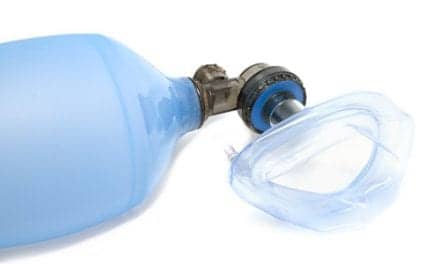Together, a Medical College of Georgia resident and faculty member have developed a new laryngoscope that may make difficult intubations easier. Harsha Setty, MD, a third-year anesthesiology resident, and Richard B. Schwartz, MD, FACEP, chair of the department of emergency medicine at MCG, developed the Video Rigid Flexible Laryngoscope, which is composed of endotracheal tubes surrounding a rigid cylindrical body. The body features an illuminated LED camera at one end and a video screen at the other. The light and camera are intended to help guide the scope down the airway. The tube is placed and then released from the scope.
“Any obstructions are easier to see because of the camera and lighted tip,” said Schwartz in an MCG news story. “The flexibility of the tip also makes it easier to navigate. There is also less physical pressure on the patient, so the risk of associated trauma is reduced.”
According to Schwartz, the device is the first of its kind to merge video and articulation. Schwartz noted that the Video RIFL is being used successfully at MCGHealth Medical Center and at other hospitals in California, North Carolina, Washington, and Wisconsin.
“While the device is being used primarily in operating and emergency rooms right now, the potential range of uses is broader,” said Schwartz. “It could be used in emergency rescue situations where patients are airlifted by helicopters and intubation is difficult because their heads are typically placed against a wall. In those cases, rescue workers have to intubate from the front and the camera on the RIFL makes that easier.”
Noting the possible educational benefits, Setty added, “I could project the camera image on a monitor to teach students how to intubate in difficult situations.”
Setty will present the Video RIFL to colleagues at the American Society of Anesthesiologists 2009 annual meeting in New Orleans.









